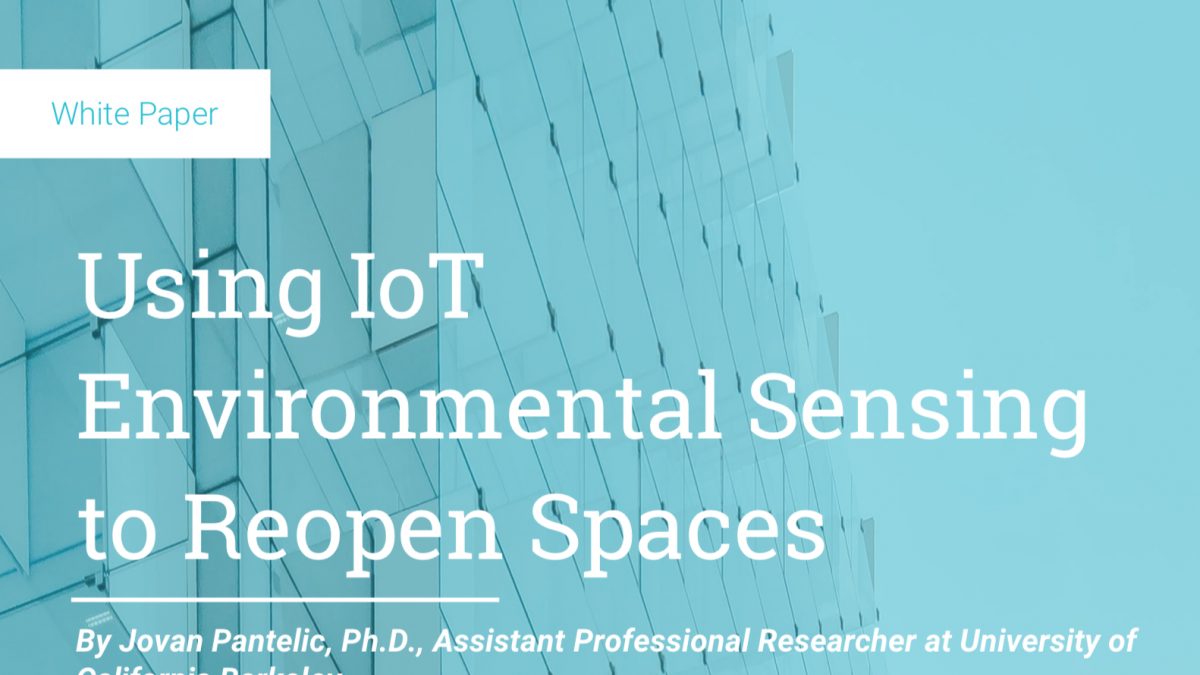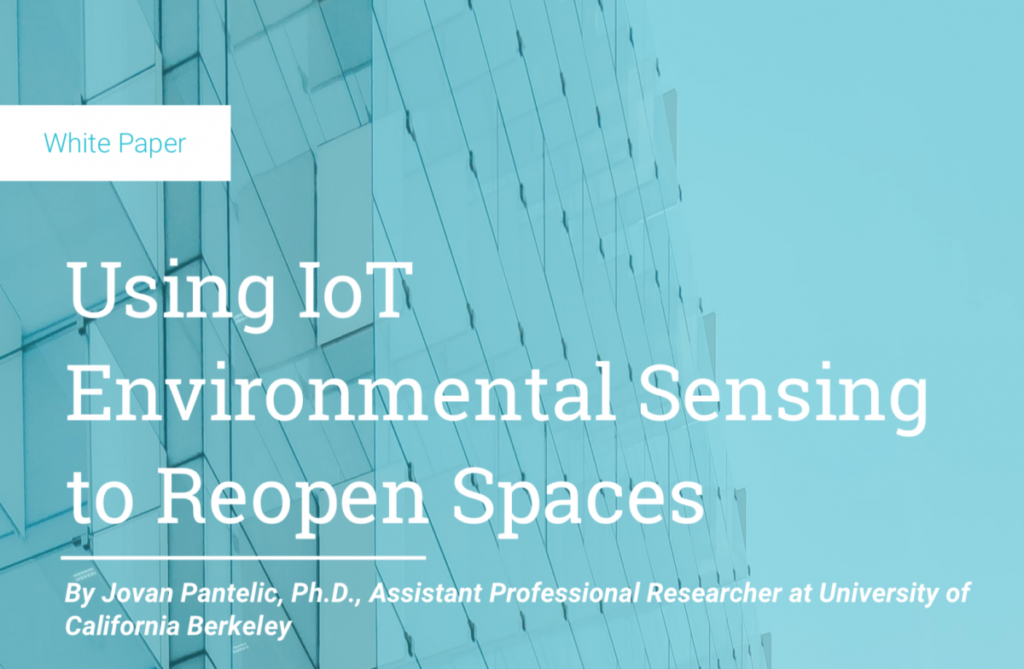
The potential of infectious COVID-19 transmission within indoor environments has disrupted workspace occupancy levels globally. The industry is at a standstill. Building owners and operators are looking for guidance, desiring a concrete basis for discerning between myriad recommendations and product pitches arriving at their door. The world is looking for real solutions to this pandemic.
Dr. Jovan Pantelic, Ph.D., assistant professional researcher at University of California Berkeley, conducts research that focuses on healthy and energy efficient buildings, including the investigation of airborne modes of influenza transmission by quantifying source strength and investigating capabilities of ventilation systems to mitigate airborne transmission. He is a member of ASHRAE’s Environmental Health Committee responsible for putting together ASHRAE’s Position Document on Infectious Aerosols.
The White Paper that Pantelic created for Senseware, Using IoT Environmental Sensing to Reopen Spaces, posits that everyone is asking the same question. How do we prepare today for an unknown tomorrow? The science behind the airborne transmission of COVID-19 leads to practical mitigation strategies. The public has accepted a measure of responsibility by wearing masks to limit the airborne transmission of the COVID-19 pathogen; what responsibility do industry leaders have in deploying available technology to mitigate COVID-19 transmission in building spaces?
Pantelic’s research informs the White Paper that examines the science behind the airborne transmission of COVID-19, and evaluates practical mitigation strategies based on that science.

